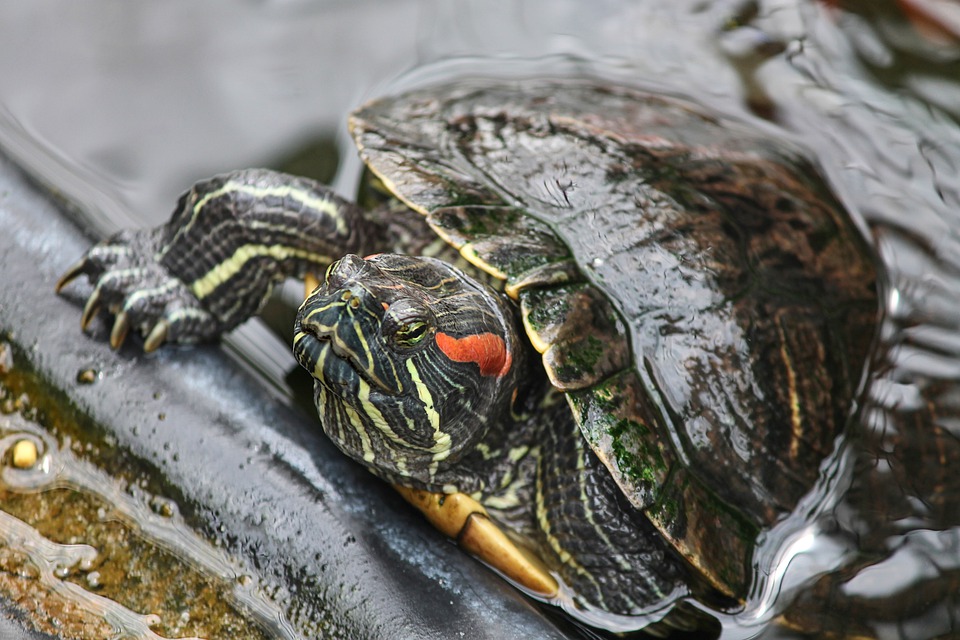Table of Contents
How are red ear sliders as pets? Before getting yourself into a situation which may later surprise or worse alarm you, you will want to find out how feasible it is to own more than one of these comical looking RES turtles. How are red ear sliders as pets? Keep in mind that these tiny, little green cuties will grow to be very large and messy aquatic animals which will require you a lot of your attention and time. Not only will you have to consider the size it can grow to – a whopping 12 inches in some cases – you will also need to factor in the available space you have at home which may later be swamped with tanks and aquariums if you are not thoughtful. In this article, how are red ear sliders as pets?
How Are Red Ear Sliders as Pets: What to Expect
A red eared slider which is well cared for in captivity can be expected to live for well over 20 years. There have been some which have been recorded to live up to 50 years old and beyond. Keep in mind that it is illegal to release a red eared slider back to the wild and if an individual were caught they are going to be heavily fined. So if you become overwhelmed by a nest of red ear slider hatchlings, you will have to do what is right by researching and looking for ways to correctly disperse them.
Your Turtle and Other Pets
The red eared slider is an amiable, even-tempered reptile able to share space with its kind and a few other turtle species given that they are provided enough room to be housed comfortably. Many hobbyists aim to integrate many of their reptile pets in one habitat and though this is possible and often successfully accomplished by zoo professionals, tanks housing mixed – species of turtles or reptiles can be very challenging to keep clean, is quite costly and will be time consuming.
Red – eared sliders although friendly toward most other turtles can become aggressive when its territory is threatened. It can display its innate voracity and prey upon smaller animals it is housed with if the mix is not thoughtfully researched and backed up by facts. It is best to do your homework now and determine which species would get along well with your RES turtle.
Multiple Turtle Species
If you are setting to house multiple species in one tank you will need to follow a thought out strategy to help your efforts of to integrate them. First, you will need to provide lots and lots of extra space with many hiding places and visible barriers. Next, you will also have to make sure that all residents are fed separately to make sure that one is fed more than the rest. It will also be smart to break up the habitat with different hiding nooks with barriers in order for the submissive one of the lot to be able to escape facing the dominant animal should a new pet be introduced to pets already established.
Cost of Keeping a Red Ear Slider
Prices of turtles vary depending on its sort. The RES turtle is a relatively affordable pet, hence its wide popularity. The upside of getting a red ear slider turtle is that it can easily be obtained for as low as $20 in a pet store whilst some specific types can be bought from reptile breeders for a loftier price.
No matter the sort of turtle you have in mind, you will want to consider the availability of space in your home as these turtles can grow to be quite big as it matures. You may opt to search online to fid out of any RES turtles in your area being given up for adoption. There are also non-profit and rescue organizations to visit and consider before making a purchase and opt to rescue one instead.
Things You’ll Need
In contrast to the affordable pricing of an RES turtle, maintaining one as well as housing it can set back a hobbyist an average of $ 800-$1000 at the onset. Expect to pay around $150-$250 for a suitably sized aquarium/terrarium for the turtle to live in with a tank of about four feet in length and no less which can contain 50-100 gallons of water. You will also need to consider and factor in equipment like UVA and UVB lighting, thermometers, a filtration system, a basking platform and a ramp leading into and out of the water for your semi-aquatic ward. All these additional fixtures and sundries can set a hobbyist back about $400.
Factor in the expense for water treatments to remove chemicals like chlorine since turtles pretty much “go” where they eat and water will need to be cleaned regularly to avoid the incidence of parasites, infections and shell rot. You will also want to factor in the yearly electricity costs of keeping an aquarium clean, tempered, lit and conditioned to the needs of the RES turtle.
Veterinary Needs
A red eared slider will need minimal medical attention but it is strongly suggested that a new red eared slider be taken to the vet to make sure it is in the pink of health before it is brought home. Should a caregiver notice a shift in its appetite – outside of the normal given, when females are egg laden and have little to no appetite – the turtle will need to be brought to the vet immediately for a quick check up.
Turtles must be treated as every bit as an expensive pure bred puppy would be treated and a potential caregiver/hobbyist should be aware of the responsibilities of caring for one and must be ready to take on this charge with utter commitment. We hope this article answered your question, how are red ear slider turtles as pets






 Author and long-time animal lover. Sharing knowledge on pet care through experience and the written word.
Author and long-time animal lover. Sharing knowledge on pet care through experience and the written word.